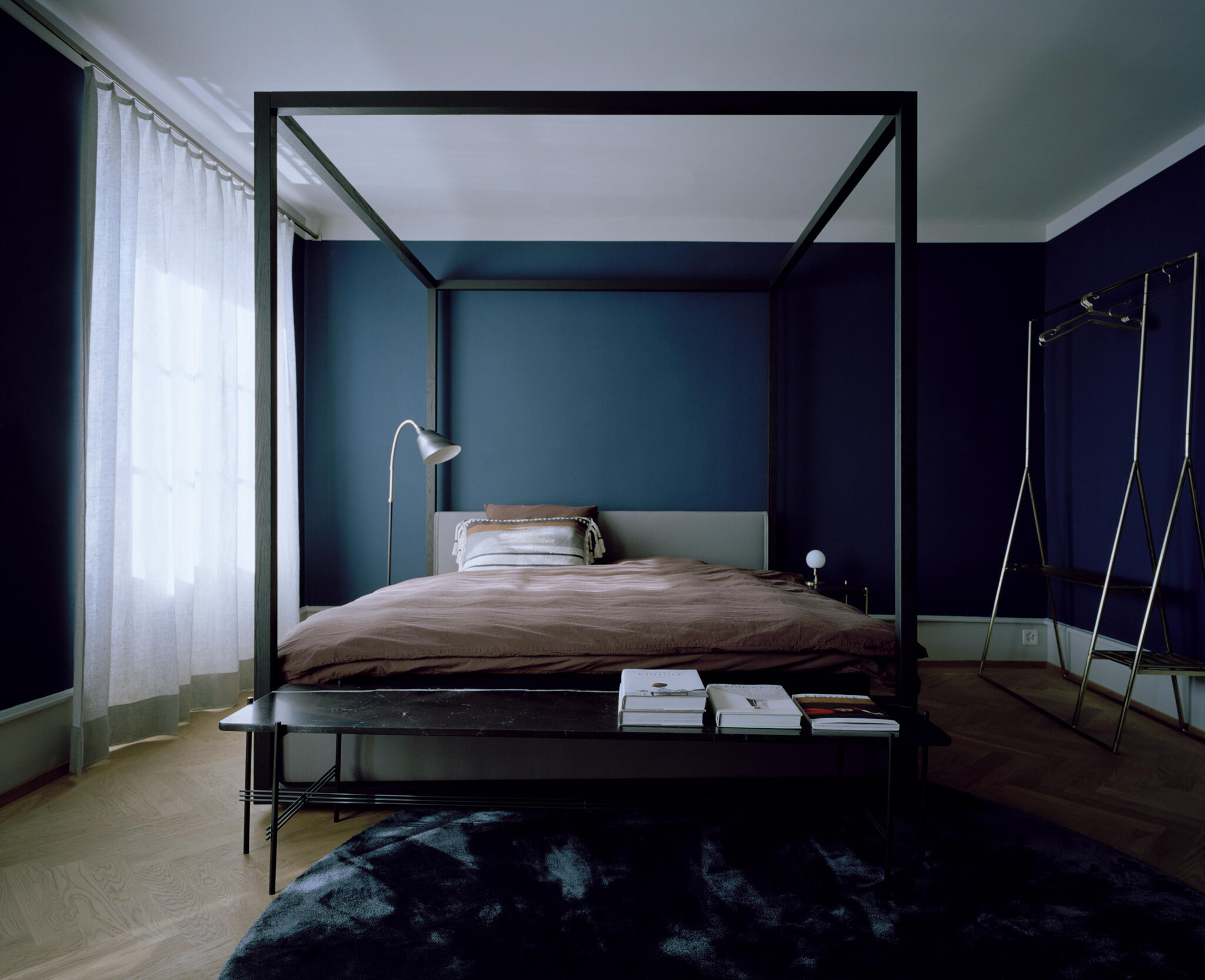As the Crow Flies
2019 – 2021. Serie of 30 Photographs. Film Photography, 4x5 Inc each. Grimsel Mountain pass, Aarmassiv (CH).
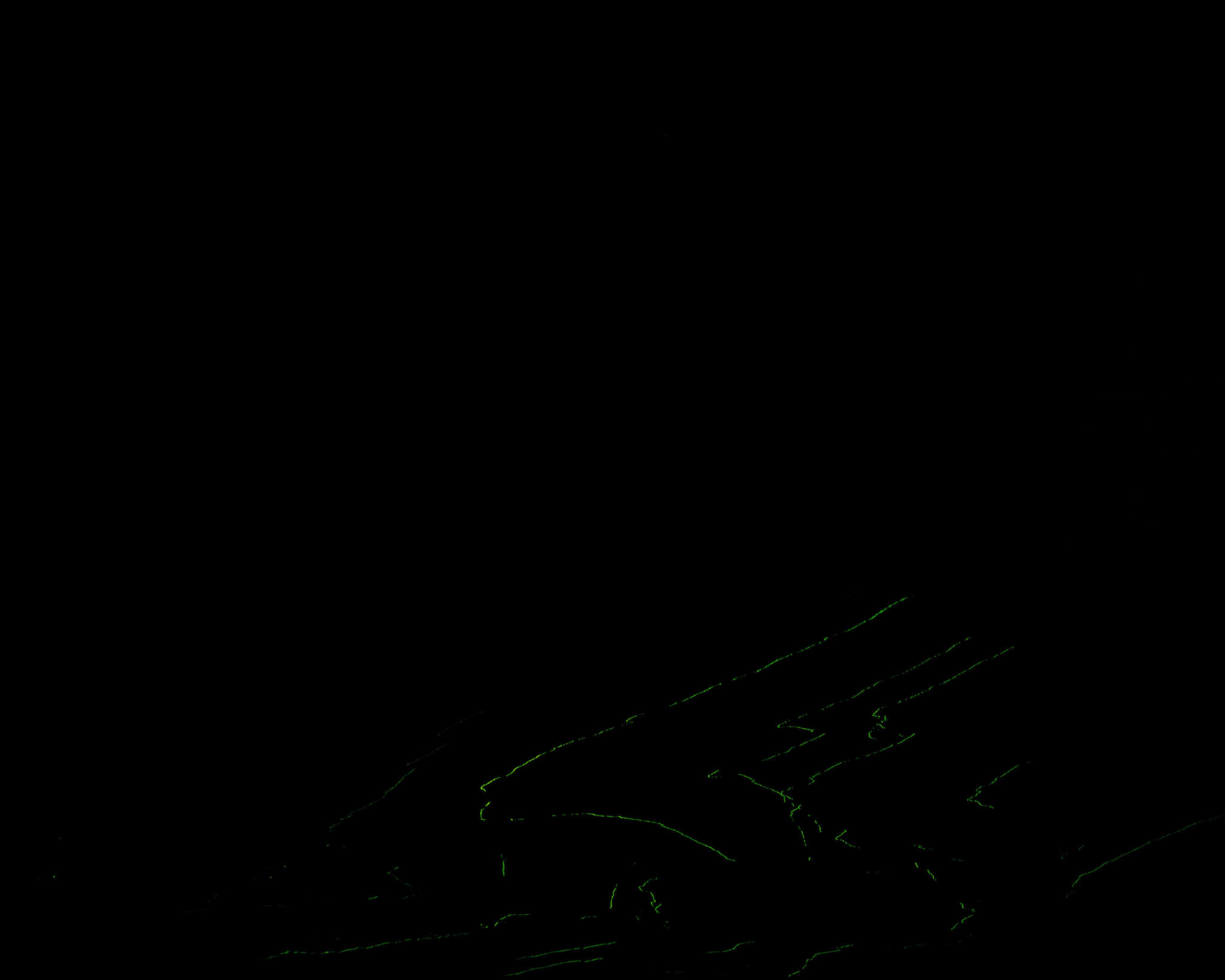
2019 – 2021. Serie of 30 Photographs. Film Photography, 4x5 Inc each. Grimsel Mountain pass, Aarmassiv (CH).
The shortest path between two points on level ground, in two-dimensional space, is a straight line. We know it as linear distance or — as Charles Dickens calls it in his novel Oliver Twist* — «as the crow flies.» If we look at how this line appears on a body surface, that is, in three-dimensional space, it is no longer straight but, depending on the body, either curved or jagged, or both. Such a line is called a geodesic, a geodesic line or a geodesic path.
*We cut over the fields at the back with him between us – straight as the crow flies – through hedge and ditch. Charles Dickens: Oliver Twist; or, The Parish Boy’s Progress.
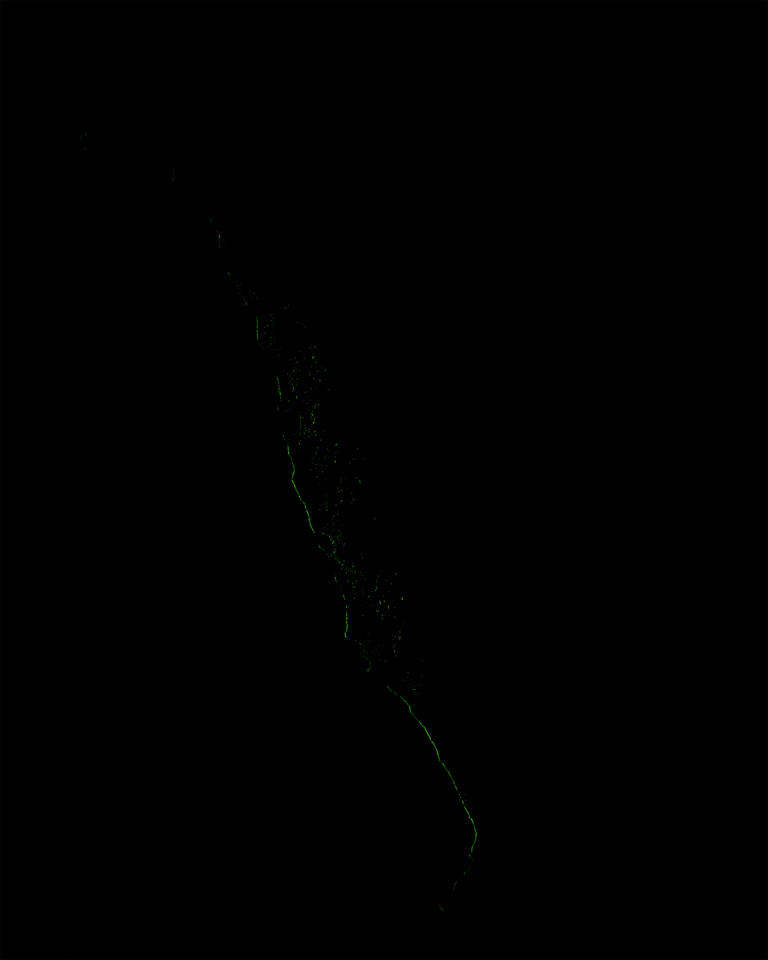
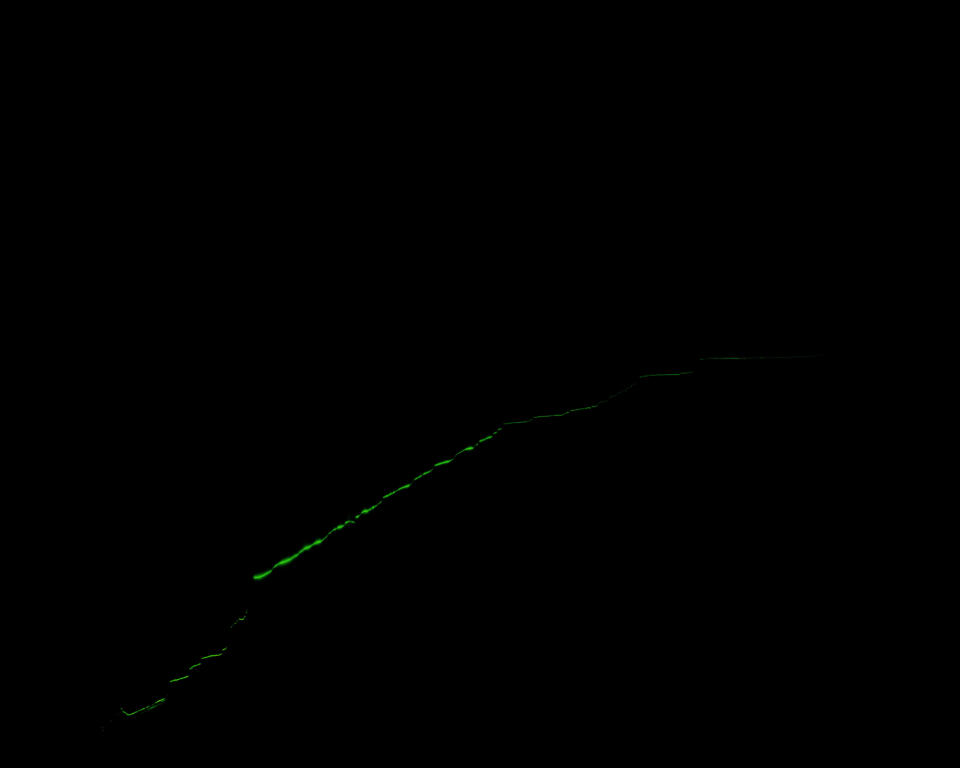
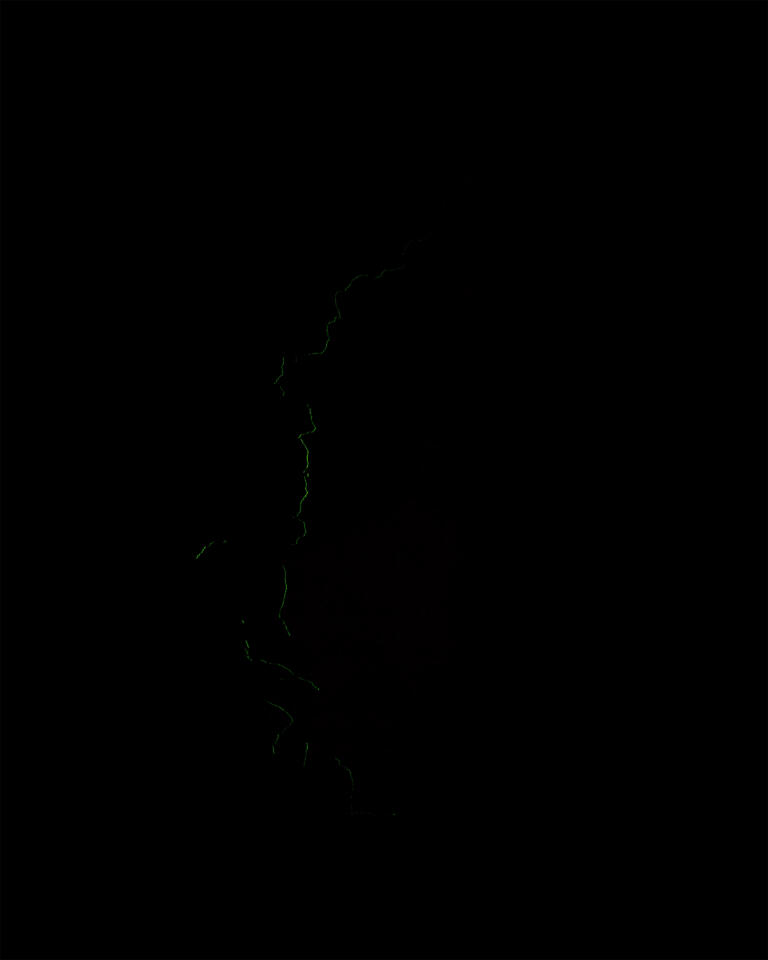
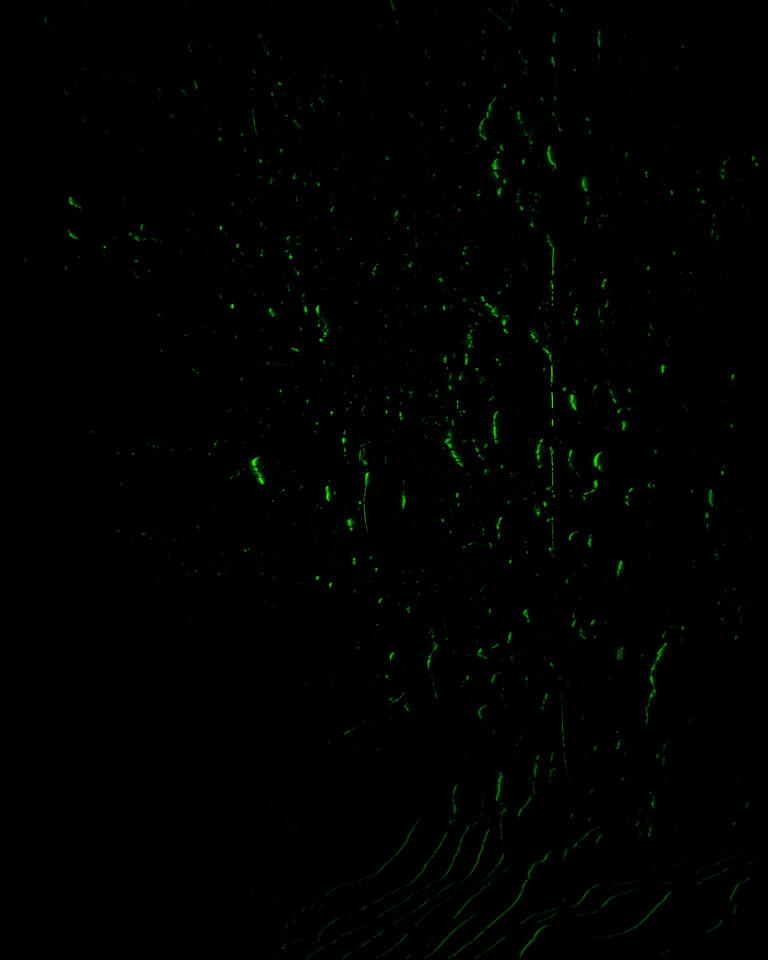
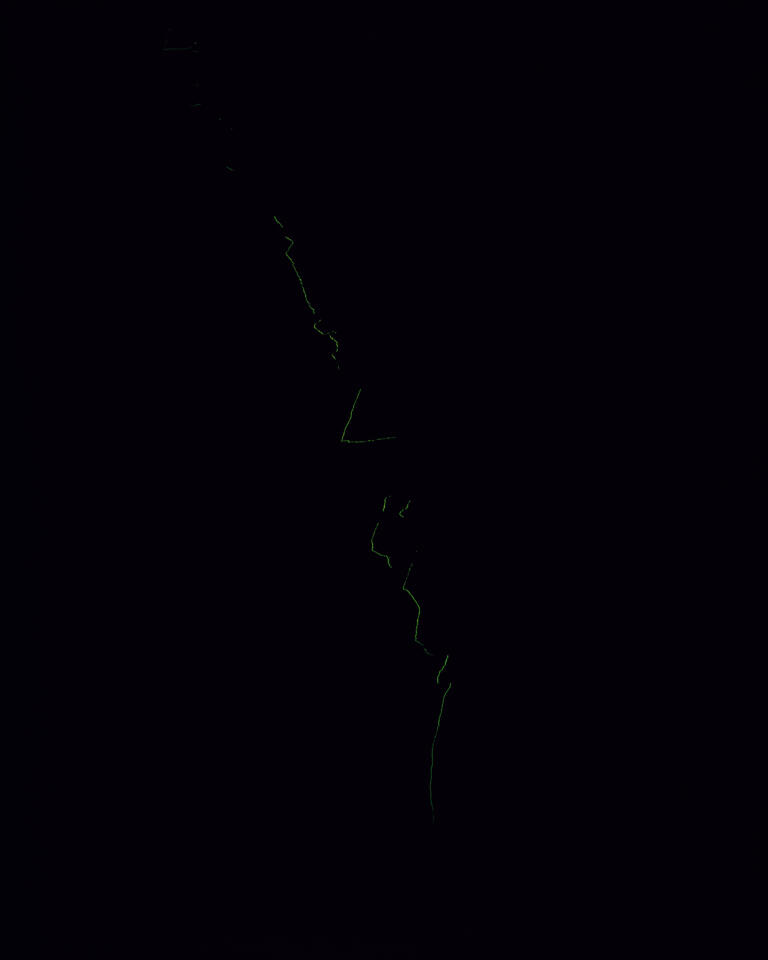
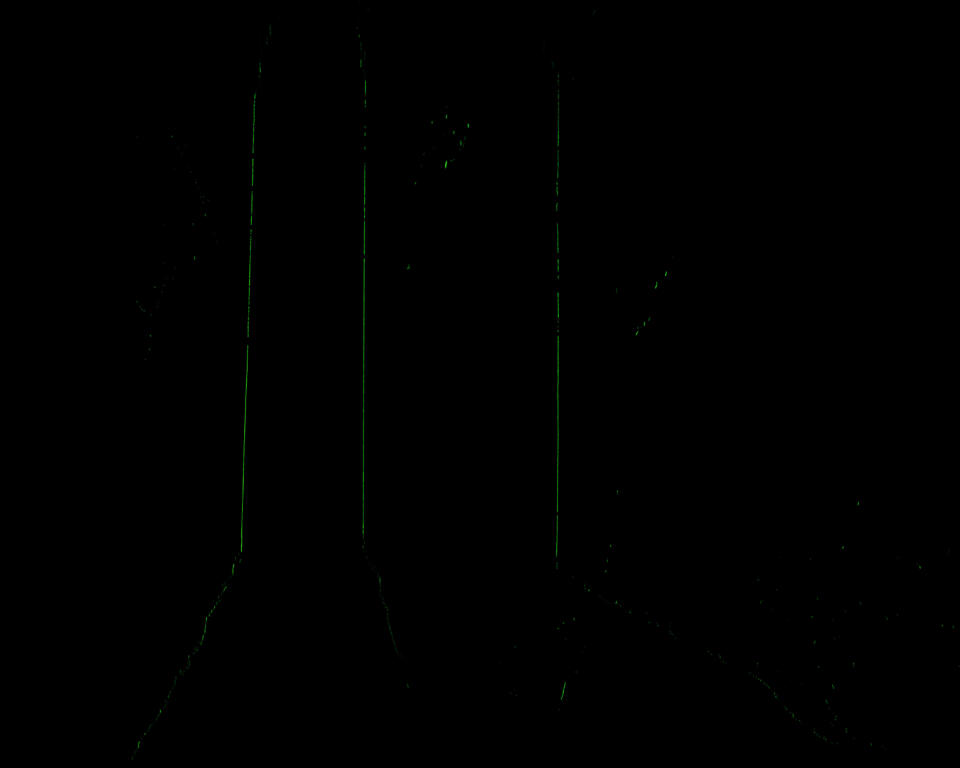
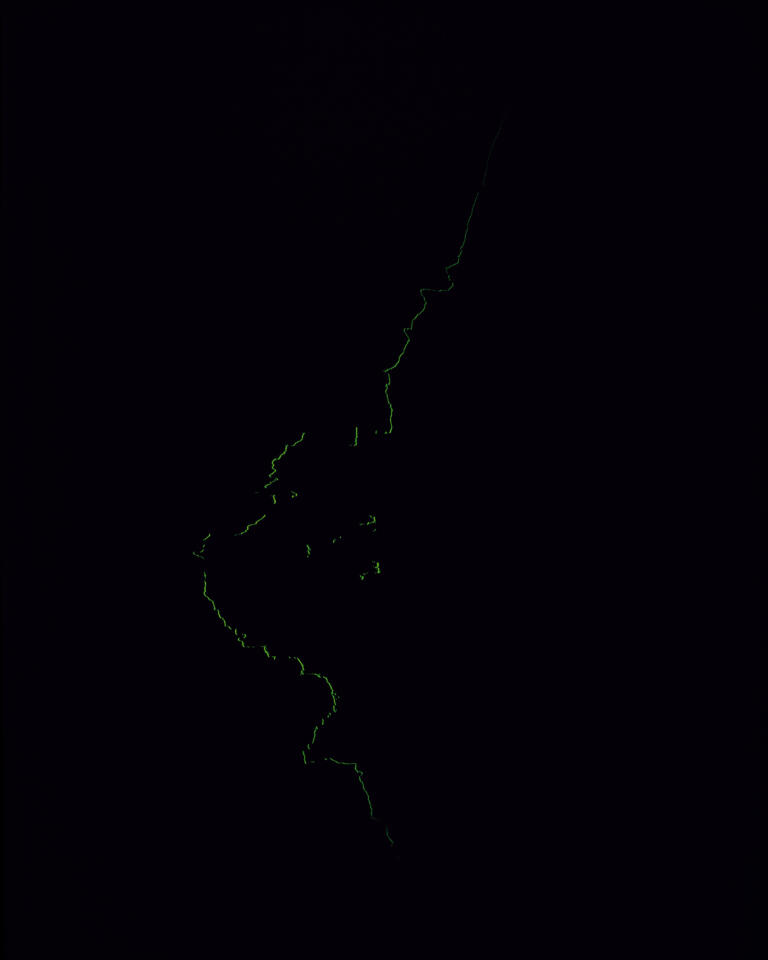
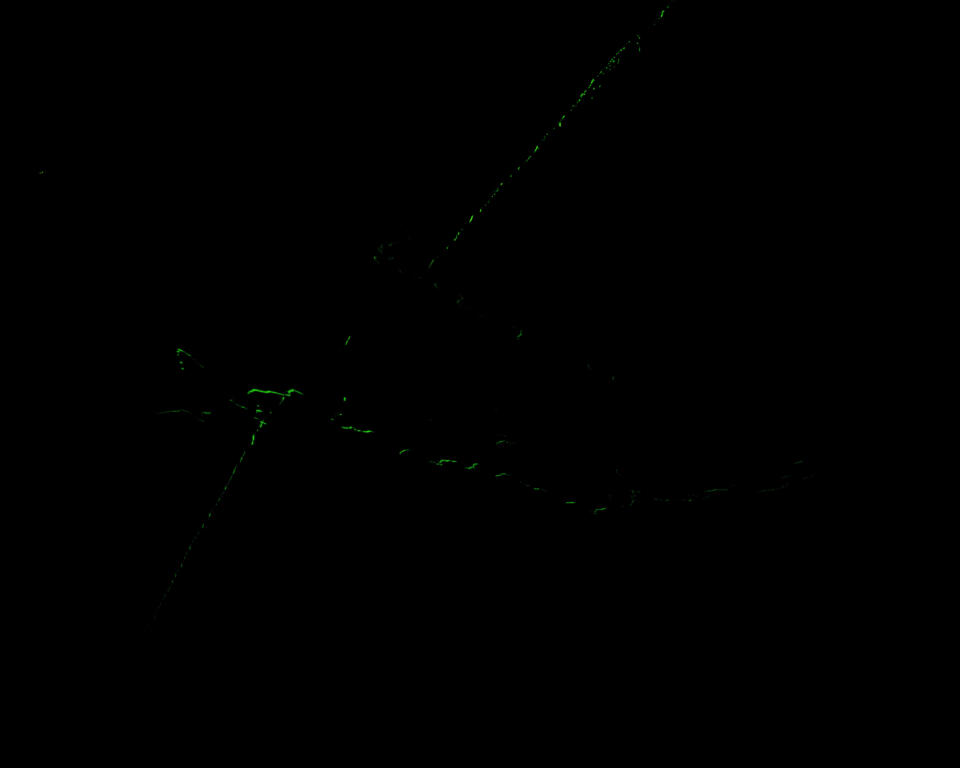
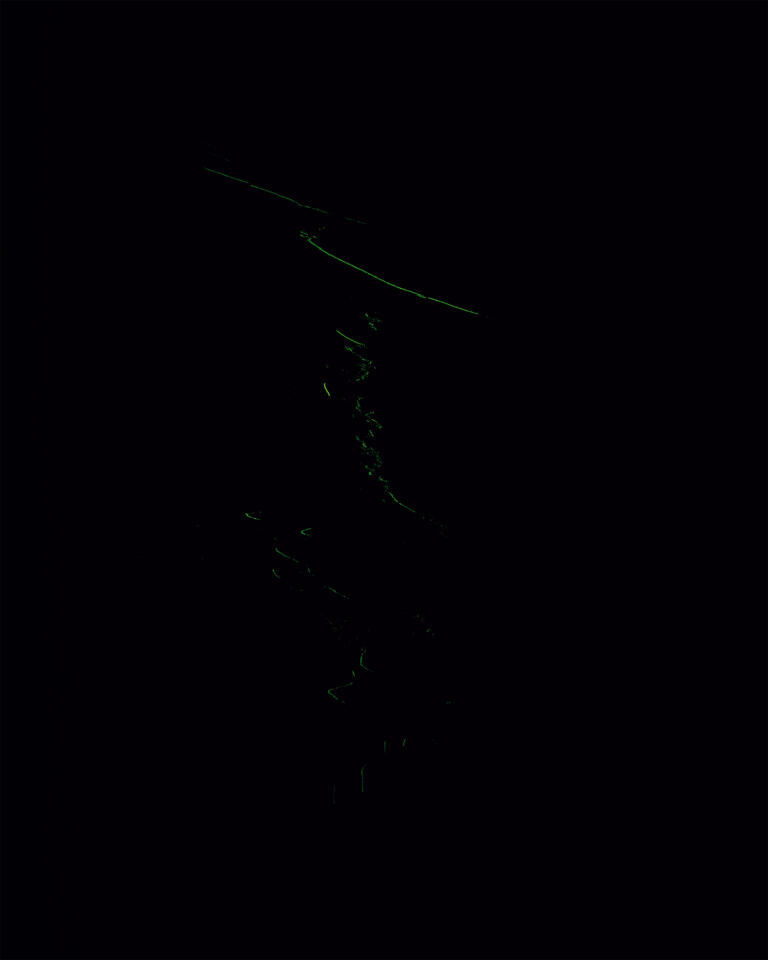
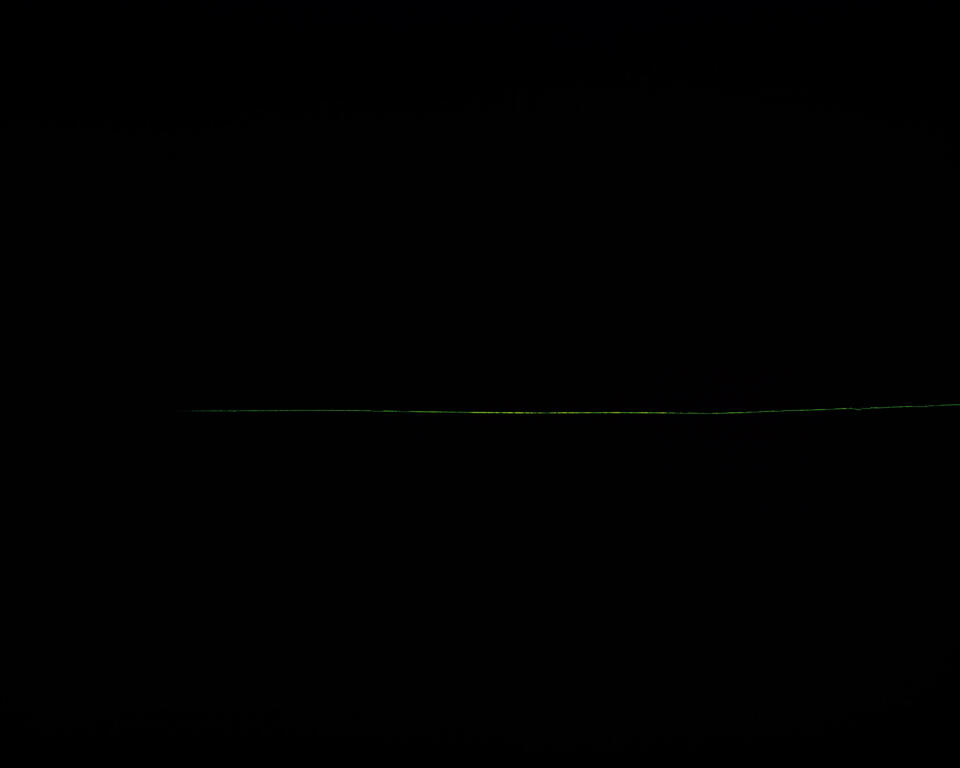
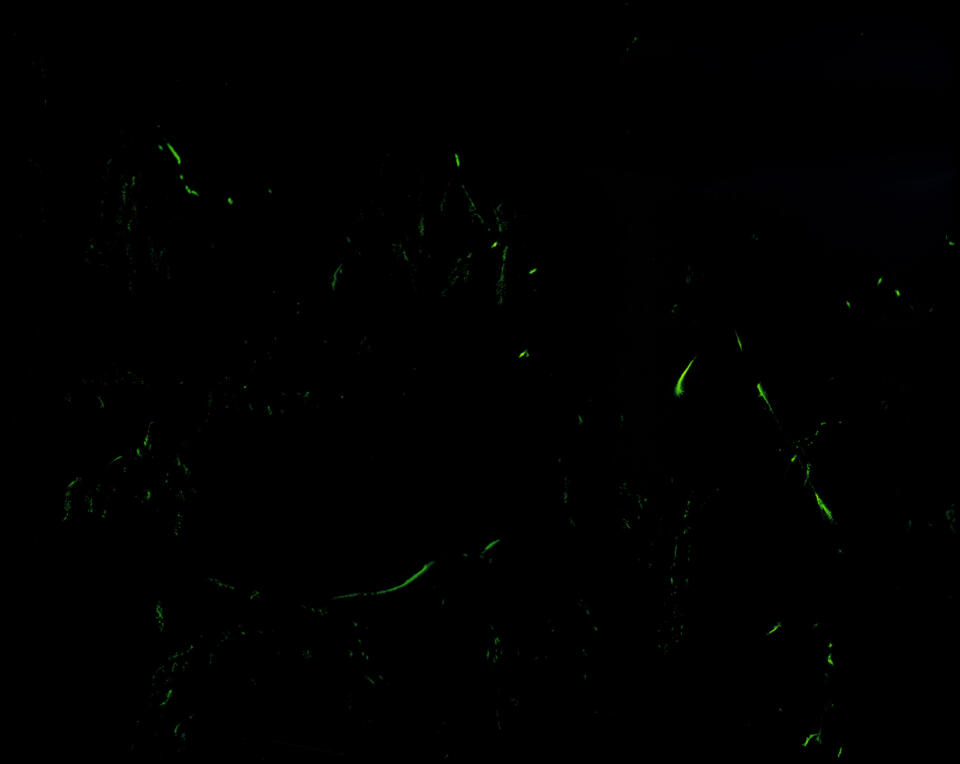
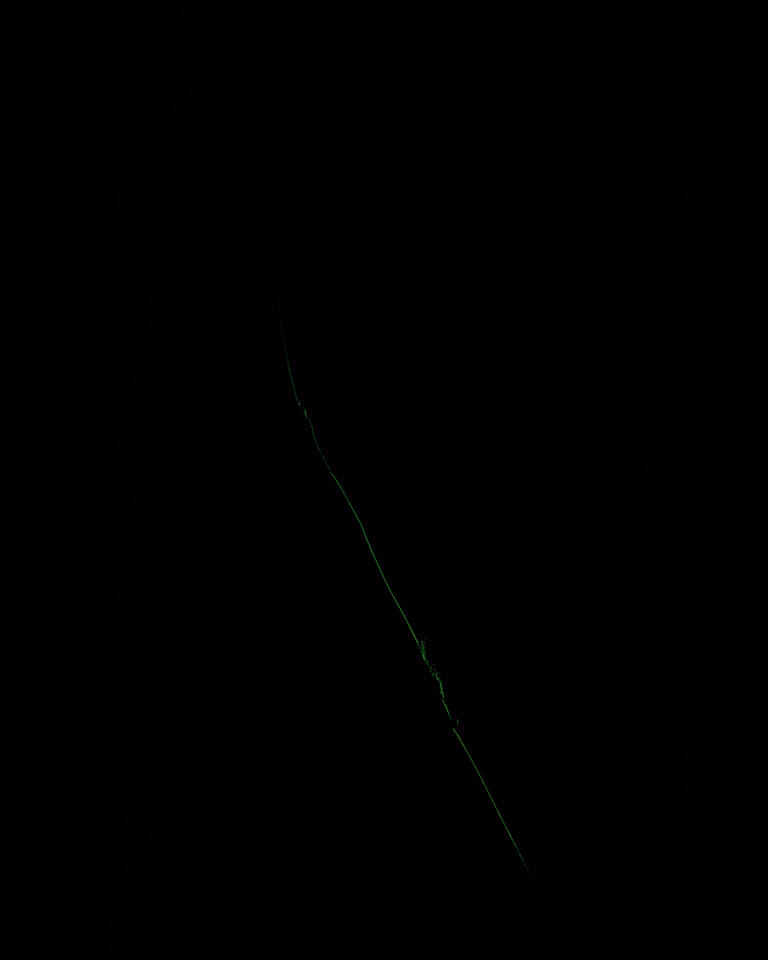
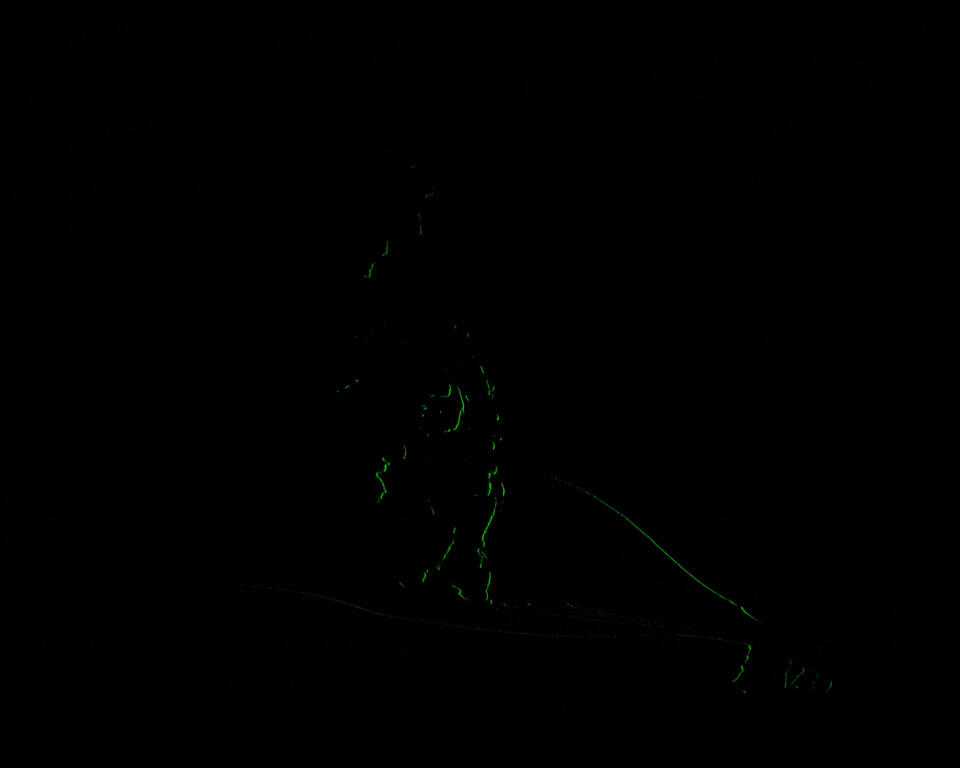
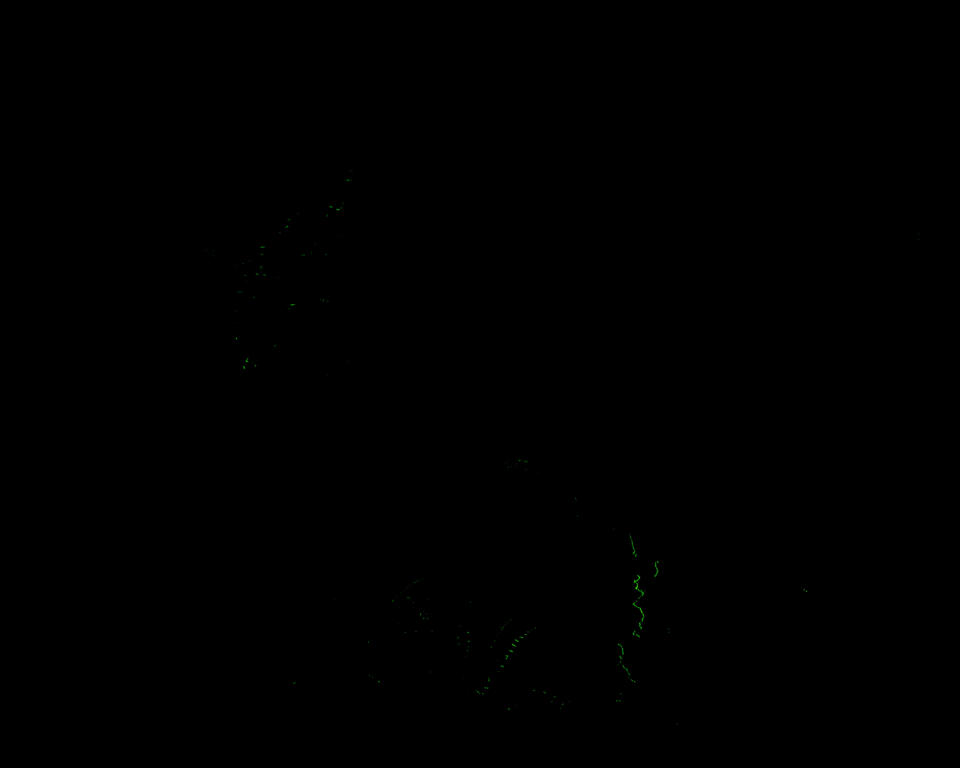
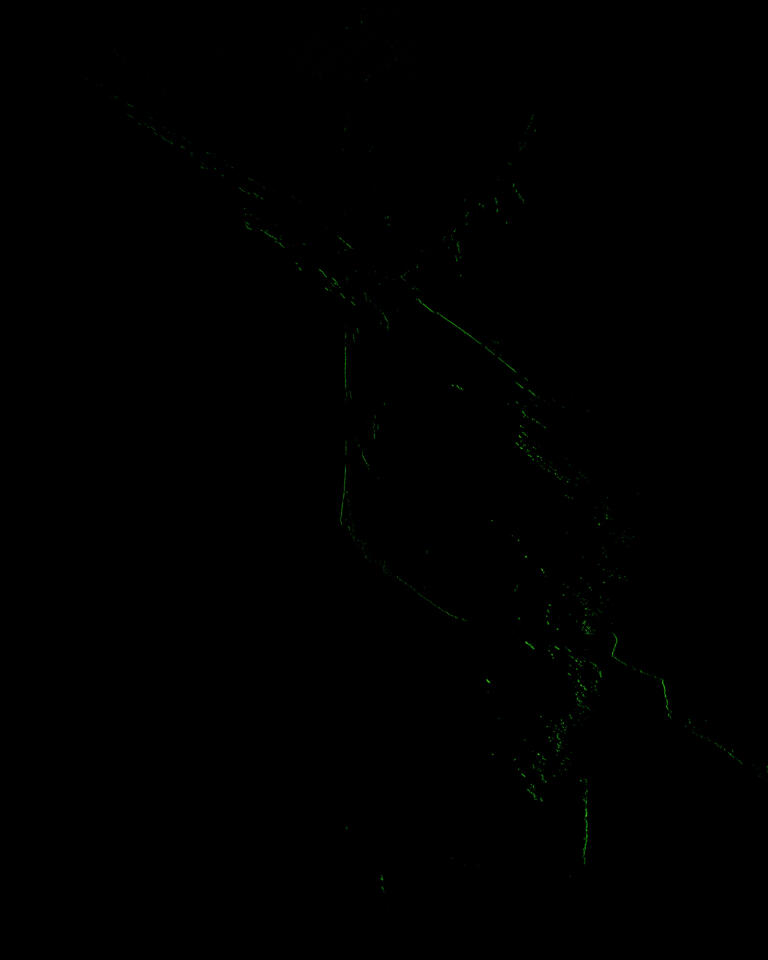
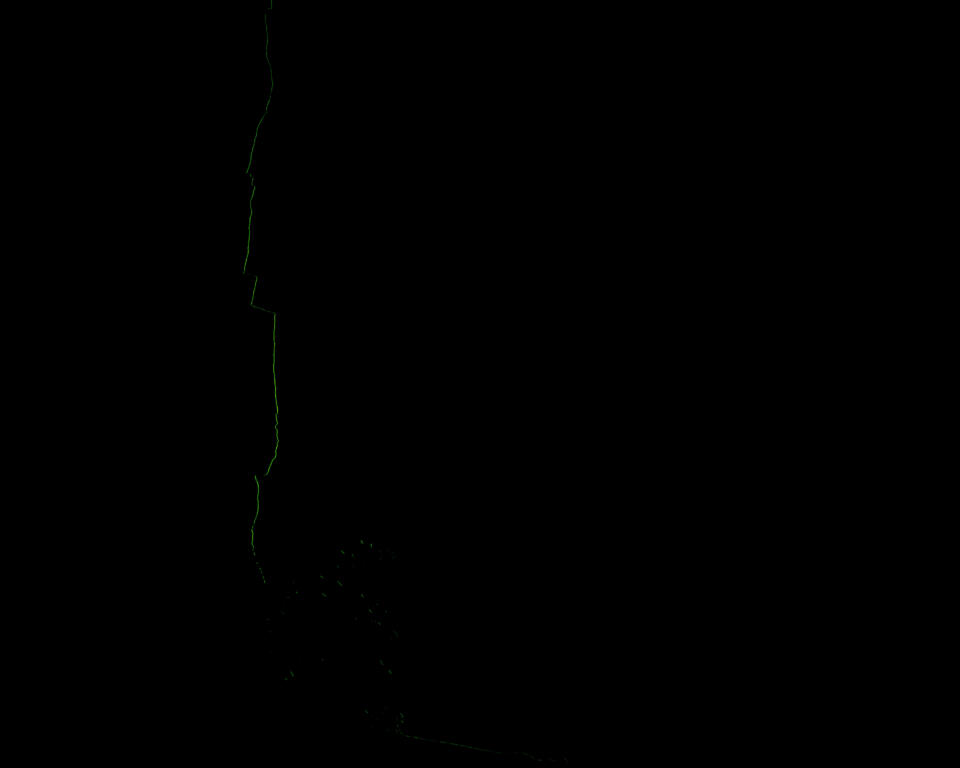
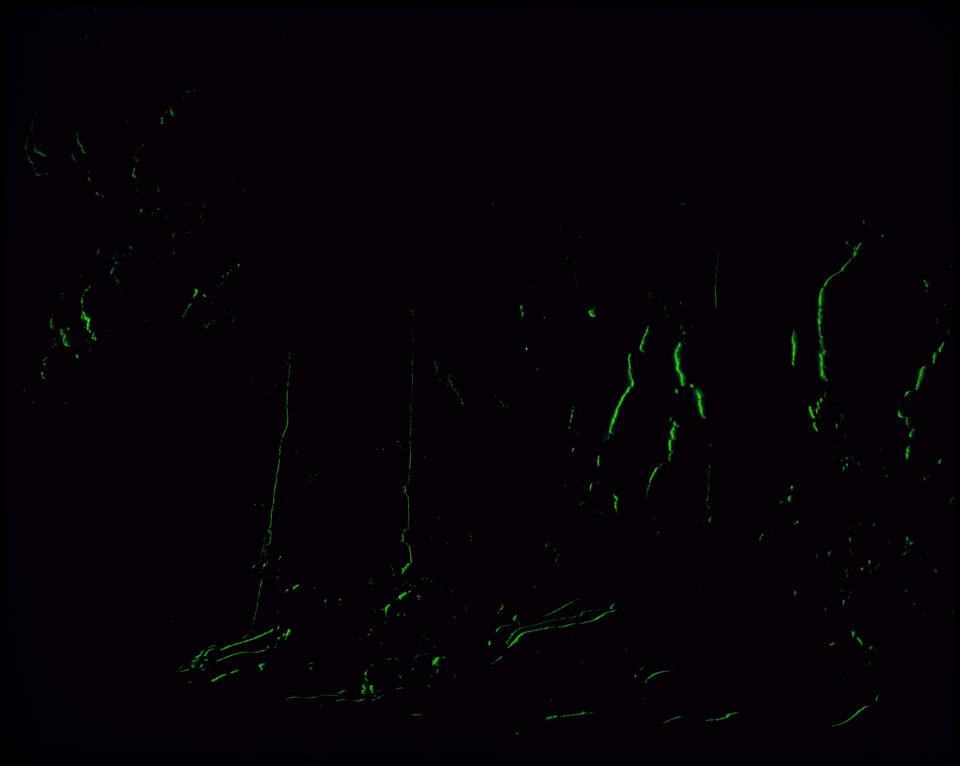
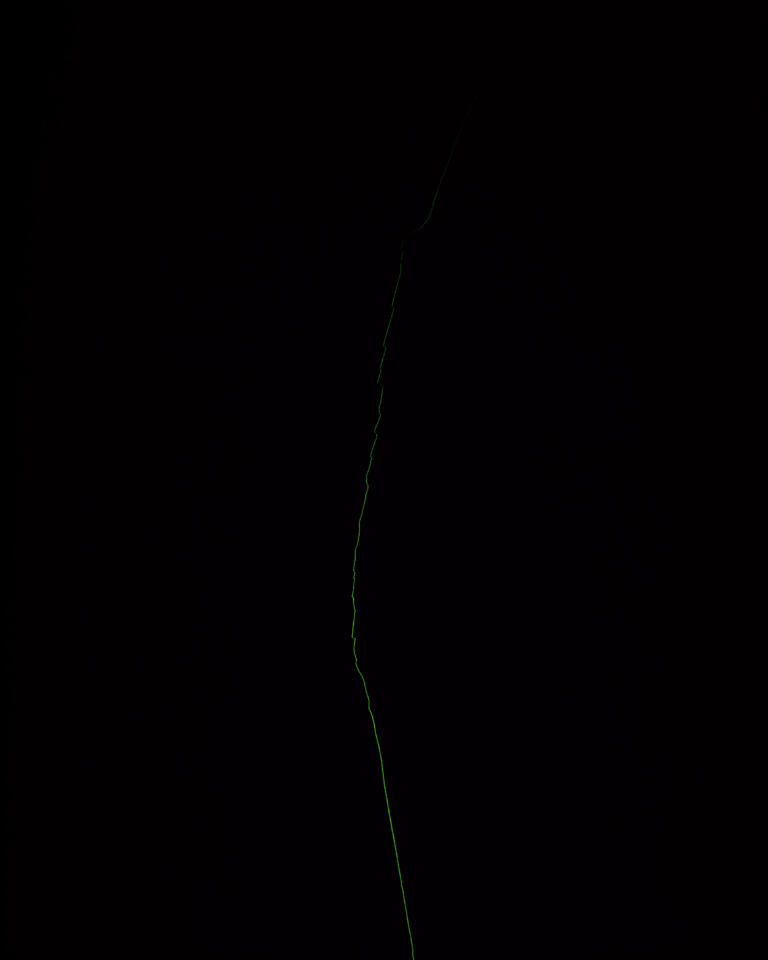
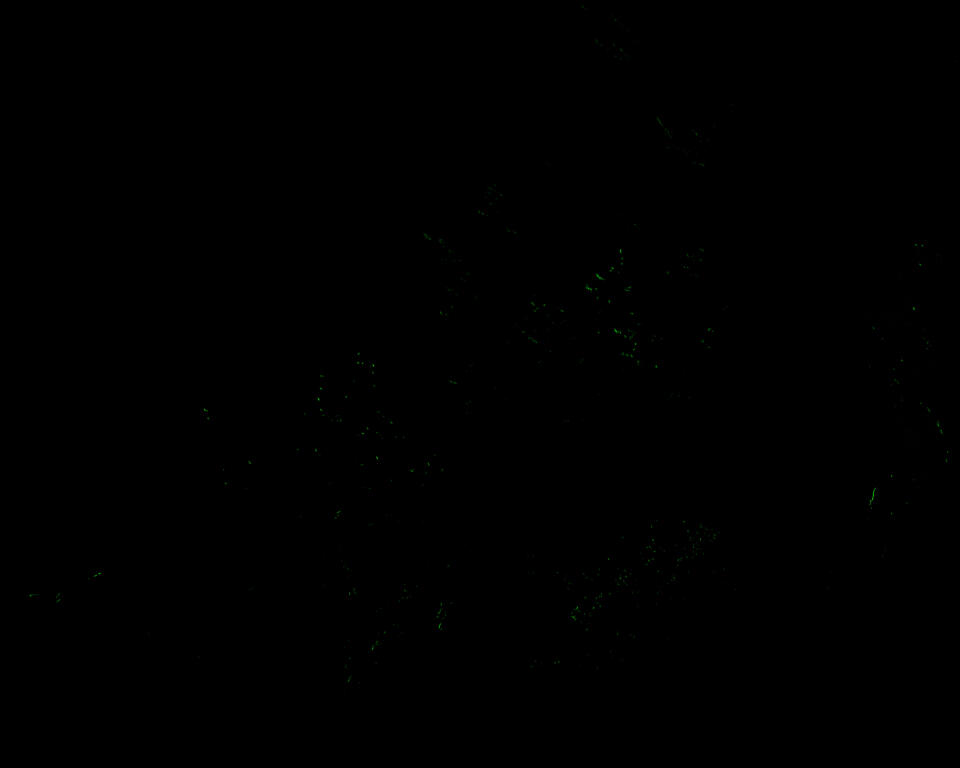
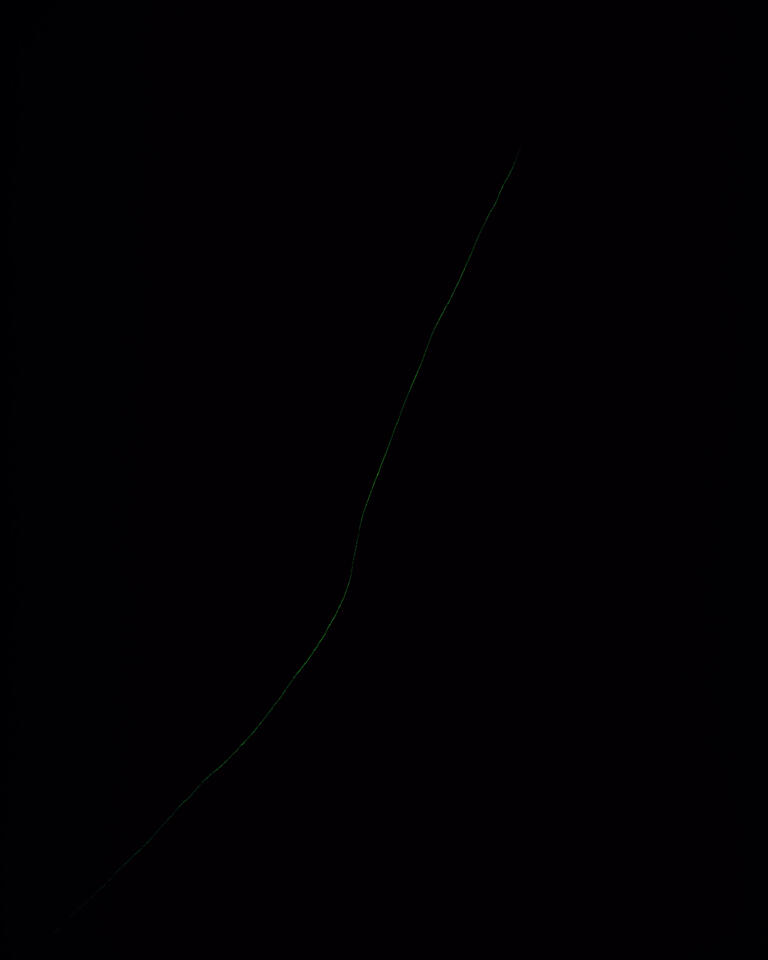
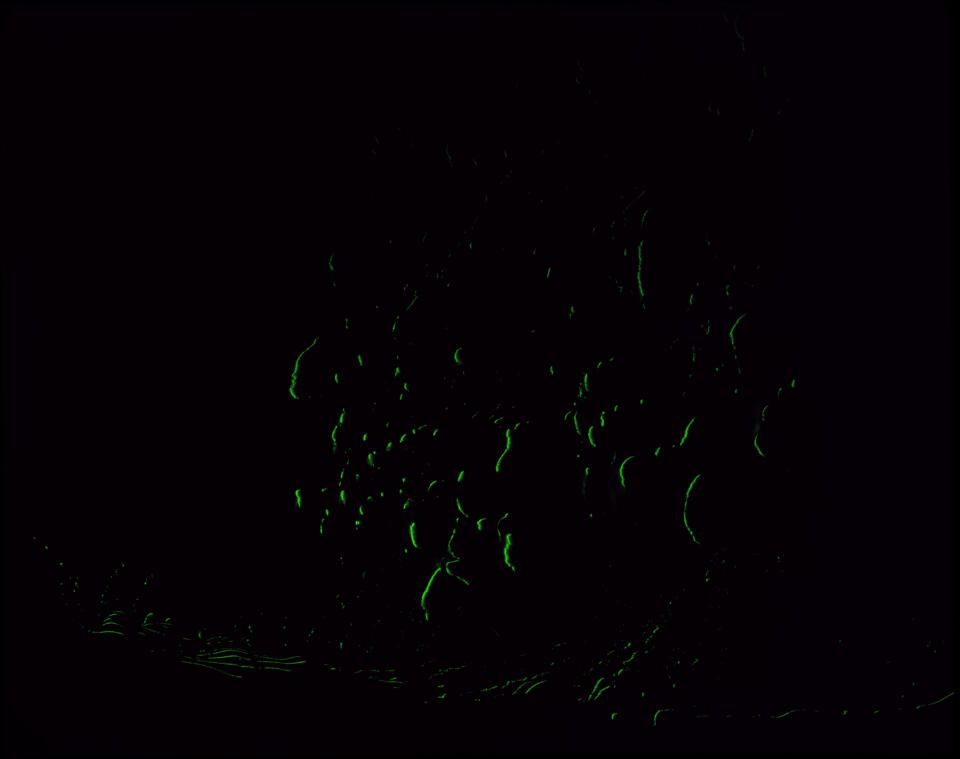
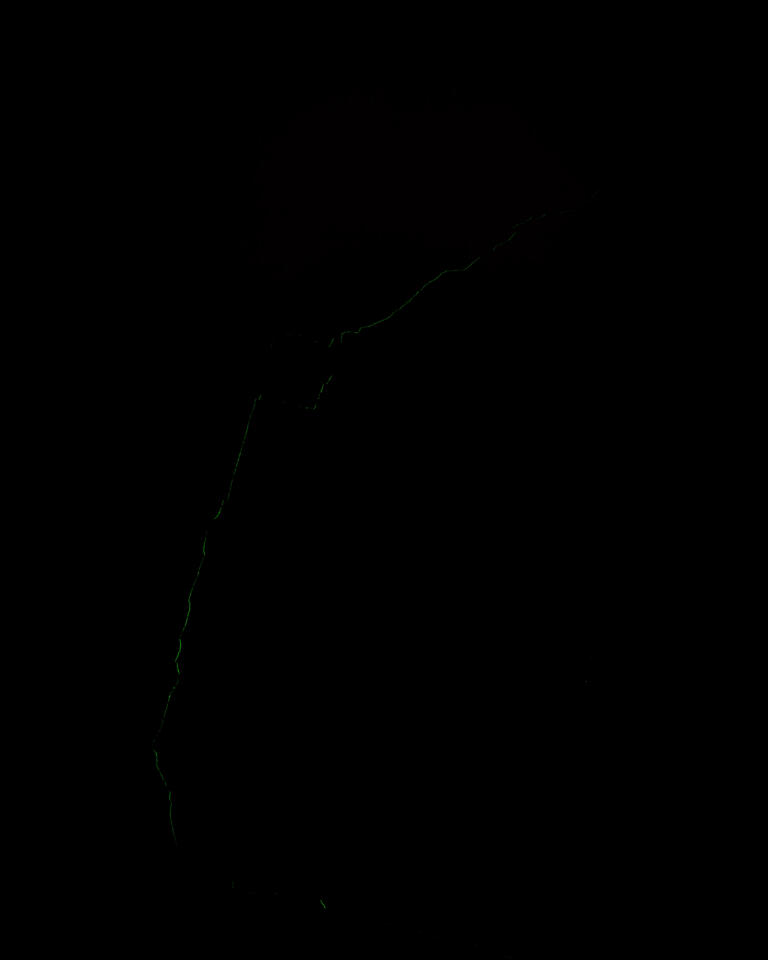
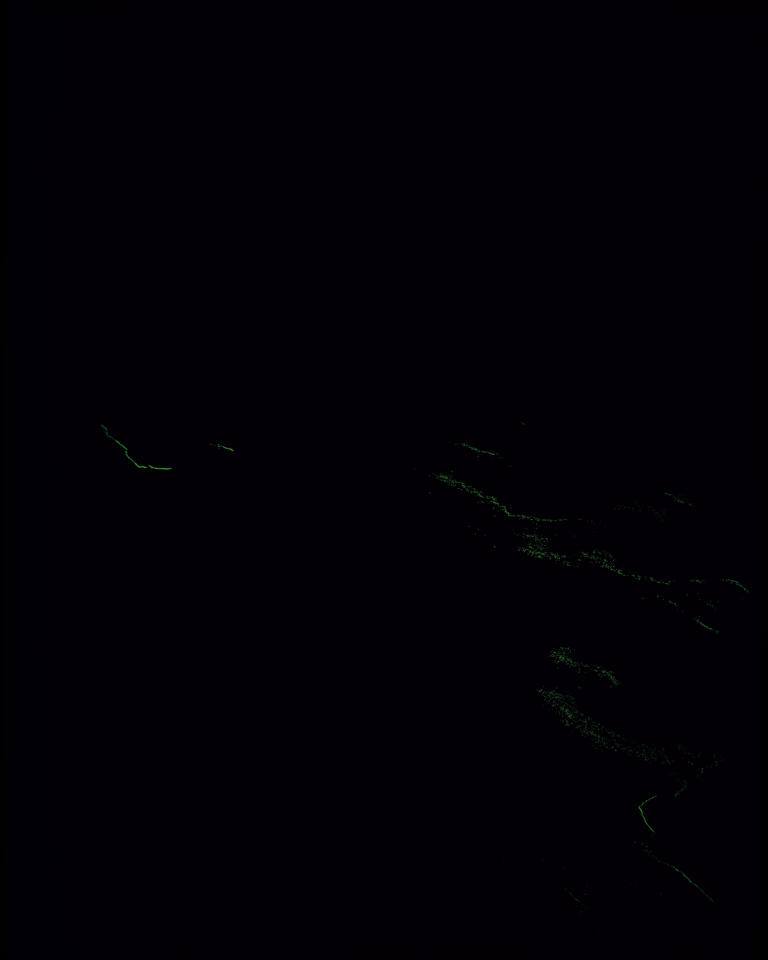
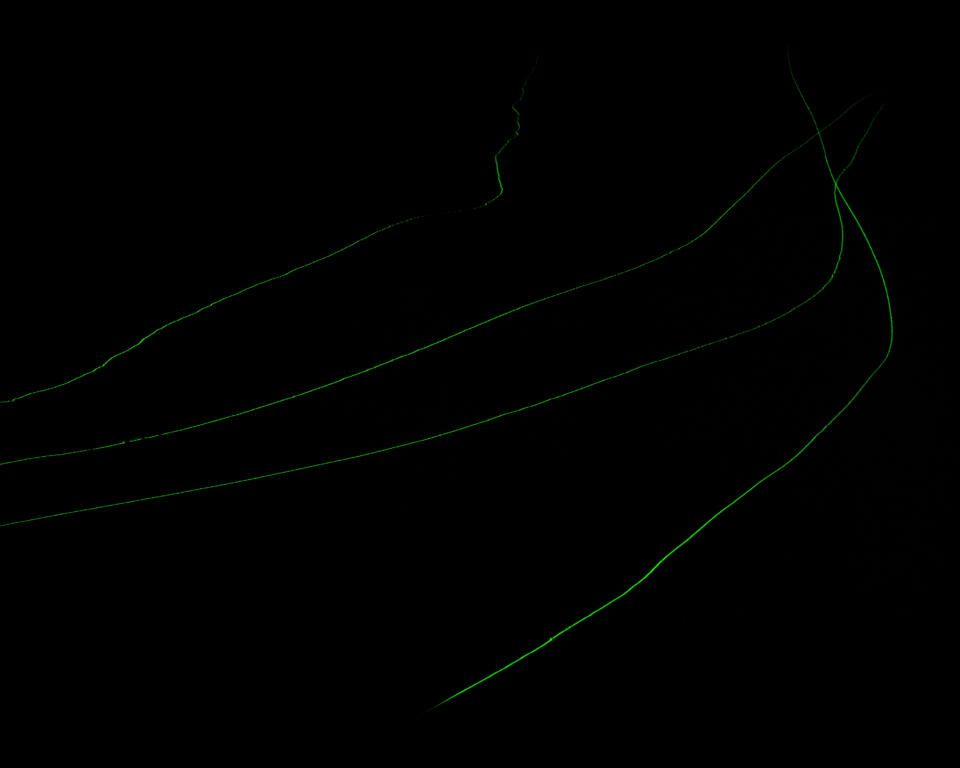
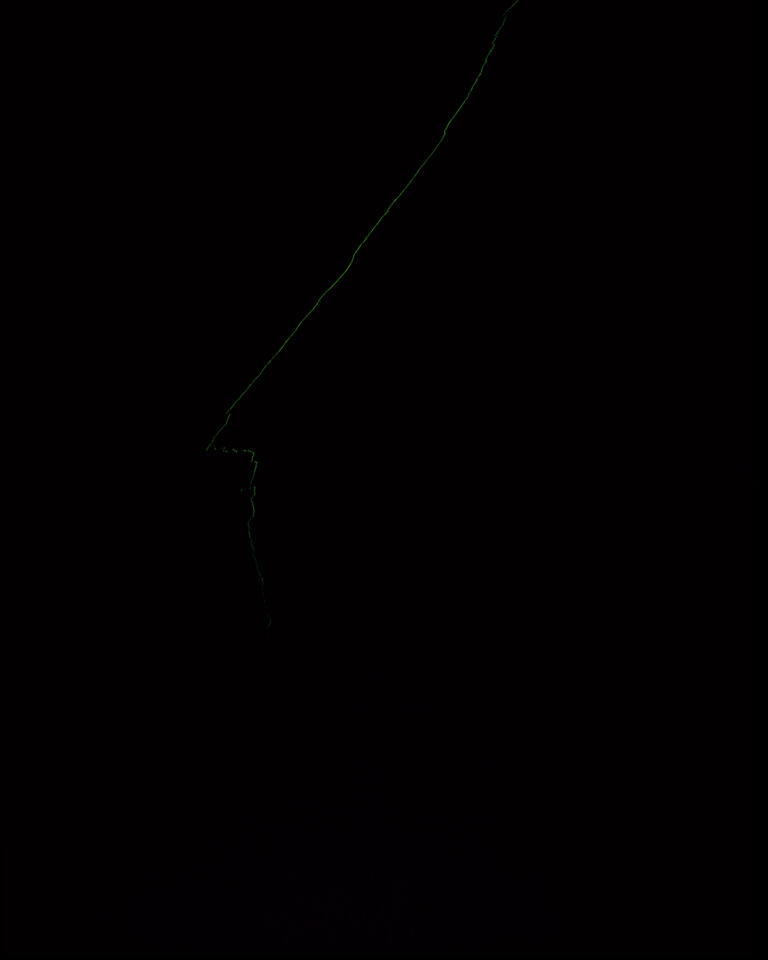
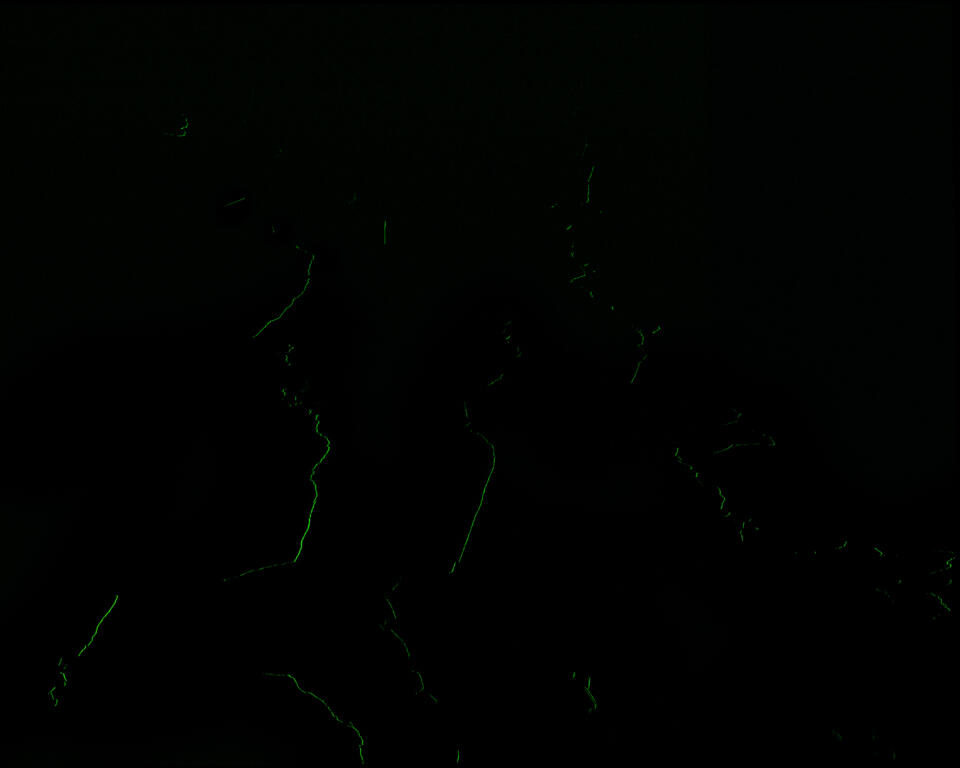
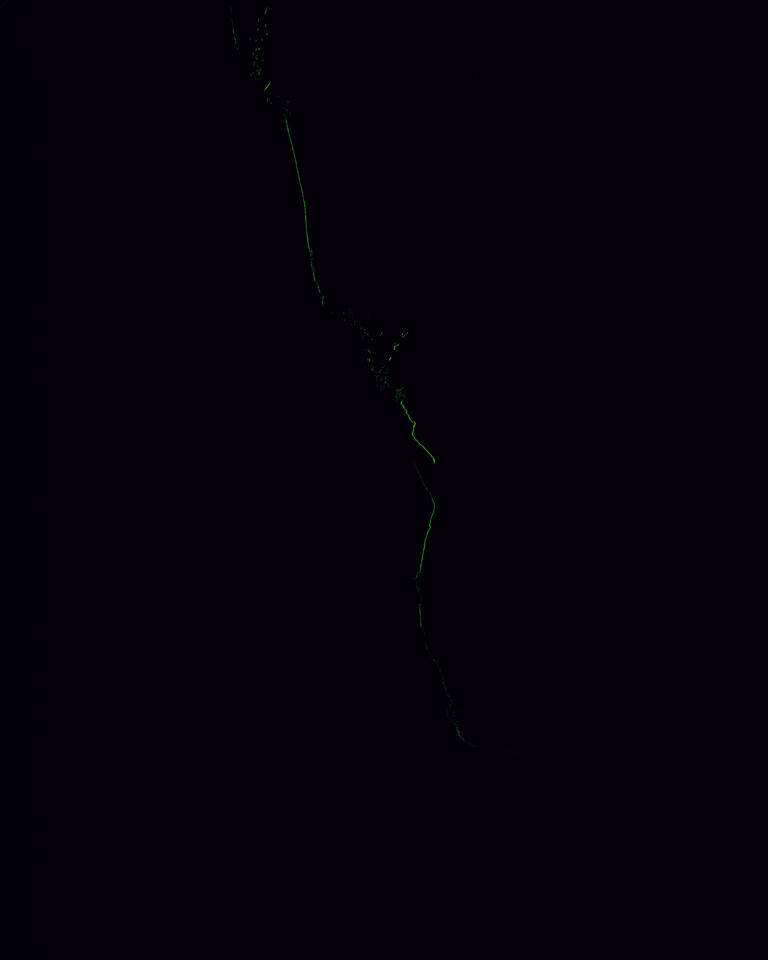
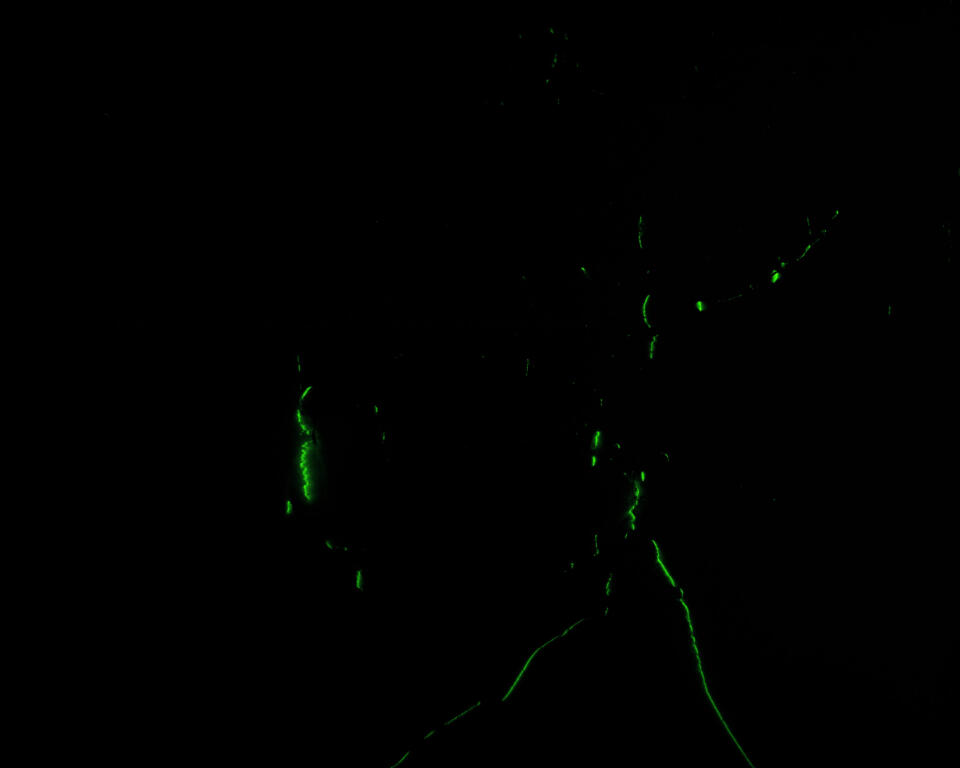
Ruben Wyttenbach’s «As The Crow Flies» explores nature and landscape photography and surprises viewers with a series of shots consisting of one or several bright green lines appearing on a shiny surface.
The variations on a light-coloured line in front of a dark background — which might just as well be a foreground or an empty space without a top and bottom — which at first seem easy to grasp, turn out to be complex. On the immaculate surface, the lines seem to have wandered erratically and yet seem to be arrested by their surroundings. The lines follow — either in a linear or interrupted fashion, sometimes as dots or as vague contours — an invisible irregular trace that sometimes extends beyond the edge of the image. This paradox of lines moving on and across a surface as smooth as a mirror sends the viewer on an exacting journey, on which the eye would love to recognize a familiar shape or space.
In «As The Crow Flies,» Wyttenbach pursues the idea of making aspects of nature and its purposeless architecture visible through photography. In doing so, he departs from the general consensus of how nature or landscape photography is seen. Nor does he simply use its means, but adds others to its repertoire. This work explores the themes of landscape, space, light and himself as a photographer, as well as photography’s commitment to quality and aesthetics. His pictures, as an extended form of nature photography, have an almost remote aesthetic and are at the same time difficult to assess, as they do not allow any reference to the place where they were taken.
Wyttenbach deceives photography as a referential medium, whose key element is light, by working at night. Removed from disturbing urban light, the darkness of the mountains opens up a referenceless space into which all references to the surrounding topography and fauna disappear. All that remains visible is the green laser line, which lays its fine, precise beam upon the polymorphous ground and is modelled by it. This projection axis is photographed at a perfectly balanced angle. As the environment falls dark, the photographer also undergoes a transformation. In the back and forth between the submerging terrain and the lens, which the photographer must align, he, too, becomes an actor in front of the camera. The balancing of detail and whole, of intuition and architecture, is what motivates Wyttenbach. He is interested in the production process up to the point where he must choose a particular line.
In the production process, Wyttenbach resorts to the analogue 4x5 inch image capture technique and abstains from digital post-processing. In over forty nights, he takes around one hundred and twenty photographs. The title of the work is taken from Charles Dickens’ figurative description of linear distance in Oliver Twist. Similar to how the bird’s flying shadow skips across the terrain below, showing a differently shaped line depending on the viewing angle, a laser line moves across the topography plunged in darkness.
Written By Barbara Hirsig
Personal Work
2018 – 2021
Ruben Wyttenbach, Photo Editing
Sarieh Yaghobi, Assistant
IN2 Design
